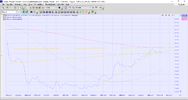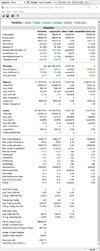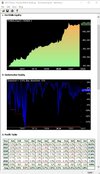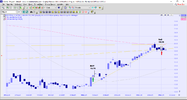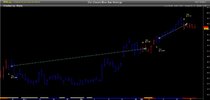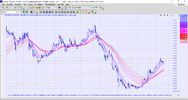- Joined
- 24 December 2005
- Posts
- 2,601
- Reactions
- 2,066
Sorry Skate, I hope you don't mind me littering your thread but just to make it clear for everyone to see how I draw my short term trendlines (all trendlines actually) I do it on end-of-day prices so I can really get fine precision to really know when a price has moved out of a support line. This is the same 4-month daily chart only now drawn with EOD.
